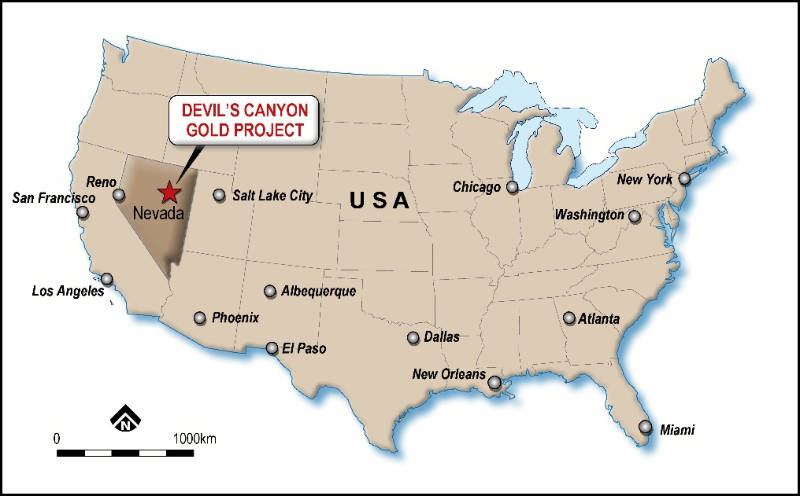You might be interested in
Mining
Arizona Lithium pens mining services agreement with NTEC, putting Big Sandy on pathway to production
Mining
Resources Top 5: Lithium back on menu, while BMO dines out on high-grade Swedish copper
News
Mining
Special Report: Hawkstone has snared itself another potentially ‘company making’ project in the US where sampling by the vendor has returned up to 92.2 grams per tonne (g/t) gold.
The Devil’s Canyon project, which comprises six Bureau of Land Management claims, is located within the highly prolific Carlin trend that has produced more 195 million oz of gold to date.
Hawkstone Mining (ASX:HWK) says the geology at Devil’s Canyon is similar to both Kinross Gold’s Bald Mountain and Barrick’s Ruby Hill gold mines.
Bald Mountain is 23km to the east and produced 188,000oz of gold in 2019 and has a resource of nearly 1.3 million oz, while Ruby Hill is located 40km to the east and had a quoted resource of 1 million oz in 2006.
And Devil’s Canyon hosts more than just gold, with the 14 rock chip samples taken by the vendor also returning up to 59.2g/t silver, 5.62 per cent copper and 4.81 per cent zinc.
A further rock chip sampling program has just been completed with results pending and drilling is scheduled to be carried out during the first half of 2021.
“The agreement to acquire the Devil’s Canyon gold project increases the company’s holding of ground in known mineralised belts, in this case within the highly endowed Carlin Trend,” managing director Paul Lloyd said.
“We continue to explore company making projects in an area that is host to world class gold deposits, and look forward to reporting the results of the due diligence on the Devil’s Canyon gold project and further drill results from Lone Pine Gold project in Idaho.”
The acquisition is accompanied by limited historical data including reports, drill hole locations and some inferences to gold mineralised drill intercepts.

Devil’s Canyon consists of six claims under the acquisition agreement with a further 90 claims staked by the company.
The project is underlain by a sequence of Paleozic sediments deposited on a continental margin intruded by Mesozoic granite and younger plugs.
These intrusives have a strong spatial relationship to the gold and copper mineralisation within the claims.
Devil’s Canyon saw very limited production of 250lbs of copper, 19lbs of zinc and 2oz of silver from a small open pit and numerous pits and trenches.
It has also been the target of just one known period of exploration commencing in 1987 with stream sediment sampling.
High-grade gold hits were noted in two of the 13 reverse circulation holes totalling 1,056m that were drilled to test the property for gold mineralisation in the Ely Limestone and the Diamond Peak Formation.
Hawkstone can acquire Devil’s Canyon by paying $US15,000 ($21,111) after completion of a 30-day due diligence period and make payments of $US15,000 each year on the anniversary date.
It will be required to pay 3 per cent of the annual exploration and development work expenditures to the vendor. This will convert into a 3 per cent net smelter royalty on the start of commercial production.
Hawkstone has the option to purchase the 3 per cent fee and royalty within four years of completion by paying $US3m in cash or shares.
While the Lone Pine project remains Hawkstone’s core focus, both the Devil’s Canyon and Western Desert projects allow the company to carry out year-round exploration.
The company has started a photogeological structural interpretation of the Devil’s Canyon area.
It also plans to carry out drone magnetics to aid in the mapping and identification of mineralised structures in particular the intersections of the northwest and northeast trends.
Diamond drilling is scheduled for the first half of 2021.
This article was developed in collaboration with Hawkstone Mining, a Stockhead advertiser at the time of publishing.
This article does not constitute financial product advice. You should consider obtaining independent advice before making any financial decisions.